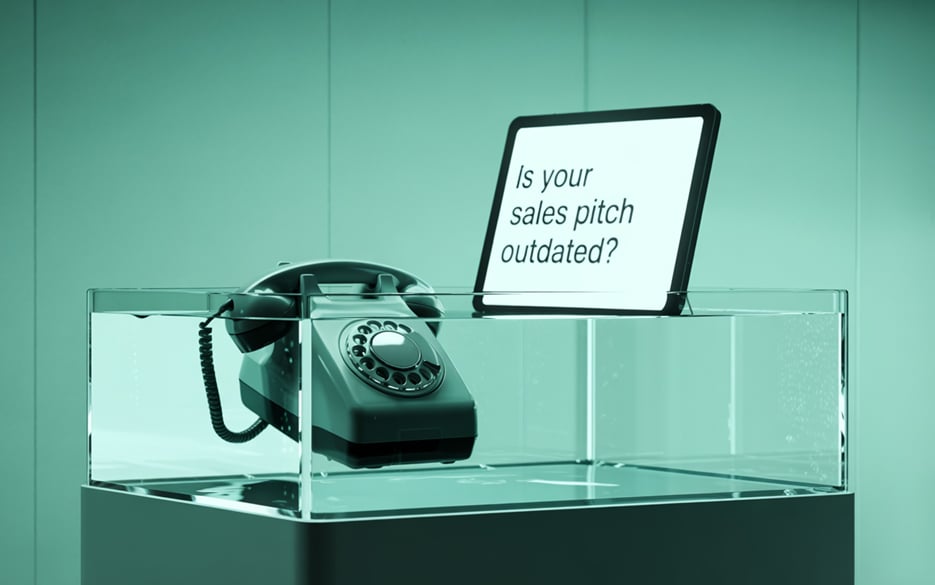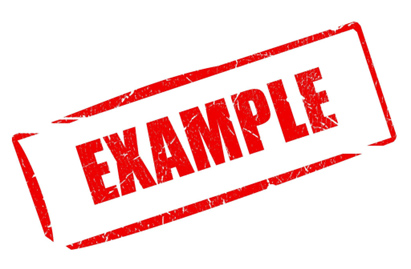Written by Sean McPheat | 

Your sales pitch might be holding you back, especially if it hasn’t changed in years.
Today’s buyers are sharper, better informed, and less patient with anything that sounds generic or self-focused. If your message isn’t landing, it’s time for a reset. A strong sales pitch isn’t about slick lines – it’s about relevance, clarity, and timing.
Through years of delivering sales training, we’ve seen how the right tweaks can turn a flat pitch into a conversation that clicks. In this article, we’ll show you how to speak your buyer’s language and bring your sales approach up to date.

Many sales training courses teach you to create a short, to-the-point sales pitch. It’s a brief few statements strung together to get your point across when you only have a few minutes. An effective sales pitch must deliver enough interest to encourage the user to reach out for more information. But that tried-and-true version you’ve used for years could be holding you back if you haven’t refreshed it recently.
The sales pitch of 20 years ago is no longer causing your would-be customers to think about you after you walk away. It’s gone the same way as flash ads and pop-up gimmicks from online sales pages. Consider some of the most important reasons why your existing sales pitch is hurting instead of helping you reach your financial goals.
One of the most important reasons your pitch strategy needs refreshing is that your customers and prospects are no longer the same as they were years ago. Digital transformation is at the heart of this, of course, but there’s more.
Today’s customer is driven by very different factors than those of just a few decades ago. Are you still trying to convince buyers you’re product is the most affordable? That may not be what they want, for example. It’s quite common today for buyers to want quality and personal service. If you’re not delivering, your competition is.
That’s the other factor that’s changed with buyers today. They are not just the people within your community. In a global economy, you need to cater to people from around the world. If you’re using the same tactics, you’re missing the mark.
That B2B sales pitch isn’t hitting home because you’re using the same tired phrases and generic messaging you have been using. Are you using these stale words? Skip it.
If you’re using these words or those similar, you’re not standing out enough. An effective sales pitch must make you memorable. These words – and other cliches you’re using – may no longer be impactful enough to make them truly “unique” or “exceptional.”
Sales communication strategies have changed considerably in recent years. It used to be common to meet a prospect and have a long talk, shake hands, and know the deal was done. You could “talk” them into buying because people listened and were willing to give it a try.
Today, talk isn’t anything more than filler. Customers – including B2B customers – want value. Show them what the product will do. Tell them what it is already doing for others. Demonstrate the value and ROI it produces. Too much talk means you’re missing opportunities to demonstrate value.
If you’re doing this, it’s time to drastically improve your sales pitch. Older sales pitch methods were often about you. For example, your marketing messages communicate what makes your business the best. You talk about what your company is doing.
Instead, flip the switch. Every sales pitch you give needs to fully understand the customer’s problem and offer a solution to it. Instead of: “We’ve got a great product at the best price….” You need to focus on “We can help you improve efficiencies and save money.”
Sales communication strategies like this reach your audience more effectively. Consumers need to know what’s in it for them before they become loyal customers to you.

Old sales pitch techniques no longer fit the specific needs of the consumer or B2B customer for many reasons. Often, old methods are no longer effective because they don’t tell your customers what they want to hear.
Remember, in all sales messaging, what you say is only as effective as how well your audience receives it. So, what do they actually want you to tell them?
Jargon. Words that sound sophisticated or expert-level. Jargon often happens when you bog down customers with lots of deep details. Even though what you have to say is true, there’s still too much information that’s not received well.
Instead, focus on clarity. To showcase a product’s feature, describe what it is. Then, tell them what that feature does for the customer. They don’t want to hear the backstory of how it works, at least not yet. In your sales pitch, get right to the point. Clearly explain what your product, feature, or company solves, changes, or achieves for the customer.
Another valuable component is proof. Now, consumers are not lacking in intelligence. They know if you through a random percentage out there that may not be true. However, consumers do want to see the proof.
Instead of communicating that your product will “save your business money in the long run…” offer more authentic details. “When XYZ Company employed our technique, they saved $1.5 million in their first 12 months of operation.” Back any claims up with authority. That could be a quote from a business leader. It may be statistics from a third party.
You have 2 minutes in an elevator with a customer. You’re supposed to use a pre-determined script to get your message out instantly in that short period of time. An “elevator pitch” as it has long been called, means describing your services in a few minutes. That used to work when people met in elevators. Today, most of your inbound customers are not likely in that same location.
Even more importantly, consumers know you’re reading a script when you cold call them. They know you have sales quotas to meet. Frankly, they don’t have time for such scripts.
To truly hit home with a customer, you must provide a conversation. Talk to them, not at them. Improve your sales pitch by, in fact, ditching the script altogether. Instead, listen to the customer’s problem and specific needs. Then, offer specific example-heavy details that allow the customer to feel valued. A personal conversation demonstrates value.
Don’t overlook these sales pitch tips:
Sales messaging that is on target for your customer is critical. This could be the average consumer or a large Fortune 500 company you want to land a contract with for your next service. Use tailored insight to provide clarity for the consumer.
Thus far, we’ve outlined a number of “dos” and “don’ts.” It’s sure to become overwhelming. What you need to remember is that your customer wants and needs someone who will change their mind, who is flexible in meeting them where they are, who did their research, and who knows the customer’s specific pain points.
More work, to be certain. Better results assured.

To improve your sales pitch, put aside everything you were taught prior. Shake off all of the habits you’ve created over the years. Then, focus on these core areas that can provide your customer with a clear answer to this question. “What can this product do for me that’s worth my time and money?”
The starting point isn’t memorising facts about your company or listing out product features down to the detailed specs. Instead, you must get to know the buyer and their world. Before you formulate a modern sales pitch, focus heavily on what you know about the customer:
Consider their sales, customers, and business objectives. If this is a B2B opportunity, how can you support their brand recognition? Step out of your own world and into the buyers’ long enough to understand their needs.
As you formulate your ideal sales pitch, use words important to the customer, not your business. For example, if you are launching a software product designed to enhance productivity, use words that the customer needs to hear. This might include “increase productivity by 10x” but also terminology related to reaching goals and lowering operational costs.
Skip the technical jargon. Instead, focus on what your product will do for the customer. Be specific based on the objectives your target customer has. This could relate to saving money, meeting compliance requirements, improving branding, or achieving objectives.
As you explore how to pitch a product, one of the most important changes to employ today is research. Long ago, your B2B sales pitch could be as simple as, “Are you looking to save money?” or “Do you have a second to discuss this revolutionary new product?”
Today’s successful pitch requires tailoring any details you offer based on your customer’s individual needs. This means that you need to do the research to be able to ask those questions. Of course, if you are giving a presentation to a company, you’ve spent time researching and designing a comprehensive pitch that is very specific to that company.
When you’re operating in the real world with a fast sales pitch strategy, you need to ask the questions. Some of the most important questions to focus on include:
Your questions should focus heavily on the customer’s problems, what factors they view as valuable in making a buying decision, and what your competition isn’t doing.
One of the mistakes sales professionals make is talking to the representative as a “company” rather than an “individual.” A modern sales pitch must draw in some emotional connection (even if you are pitching to a large organisation). Your first step, then, is to treat the person you are speaking to as an individual, not as the company as a whole.
Then, find a way to connect with that person on an emotional level. Emotional connections often focus heavily on empathy – understanding the customer’s pain points, as well as benefits, connecting your product to a benefit the customer sees as worthy.
Consider a few strategies that work well in a B2B sales pitch that pull on the emotions (and back it up with real data.”
Here’s the hardest part of successful sales messaging. Sometimes, you need to walk away and let them think.
This isn’t an interrogation. You don’t want to wear your customers down, so they buy. Instead, you want them to see the value and potential results and then crave to be a part of it. That means you have to give them time to think and process.
Today’s consumer doesn’t like a pushy sales tactic. They’ve been taught for years now to avoid sales schemes. Present, show value, and let them come back to you.
So what does work? Check out these sales pitch examples.
Stories do more than tug at the heartstrings. They show value. They communicate a message with clarity. They also create proof that what you’re offering works.
When creating a storytelling strategy, ensure it is directly relevant to your customer. That’s the big difference today. You can’t tell the same story to every customer to get results. Tailor it to their specific needs.
Consultative selling is the process of understanding your customer’s specific needs and then providing them with a specific solution. A tailored solution means a software product, a service, or some other resource that is designed just for your customer.
Instead of offering a single product or service that fits most needs, offer a wide range of services tailored to each customer’s needs. This type of sales messaging delivers a personal experience. It makes the customer believe you are offering something just for them. At the same time, it ensures your sales message sticks immediately.
Let’s face it. Time is money. You don’t always have time to do detailed research for your customer. You need a straightforward, fast pitch. You can still use sales messaging frameworks. Just don’t act like they are a script.
The trick is to customise them to fit each customer better. Drop in specific metrics or solutions for the customer’s specific pain points. That helps get rid of that robotic feel and creates a more comfortable sales pitch.

Let’s explore some sales pitch techniques and how they work today.
A company has a new software product to launch that aims to reduce spending by allocating resources more efficiently.
The old method of marketing their product is straightforward selling. They outline what the product is, how it works, and what it does. It’s interesting, for sure. Yet, this same pitch applies to every other prospect as well. It feels dated and is certainly robotic.
A more modern approach is to have a conversation with the customer. Learn about their business, how they operate, and what their challenges are. Then, offer a more fluid framework for a sales pitch. Present a solution for the software product to the customer based on their plans. The customer learns that your product can help them to improve logistics and timelines, exactly where their complex problems exist.
Let’s go further. Here’s what a B2B sales pitch should include:
Remember that customers remember their emotions, feelings and the benefits offered. They don’t remember the product feature list you spelled out. Show they the value of a product that is directly related to their concern.
As you work to build a modern sales pitch, remember this is a team effort. Everyone on your team needs a refresher, and that means it’s time to get them into some coaching and training.
Listen in on how your employees are pitching your company or products right now. Did you notice any of the old and stale methods we’ve mentioned here? If so, it’s time to make a change.
Be sure there’s some level of feedback loop in place within your business. You need to be able to learn what is working and why. You also need to consider both customer and employee feedback so that sales techniques are modified and updated as they go.
Ensure you’re incorporating buyer language into sales training. That is, you need to use the terminology and specific data points important to your customer.
If your sales pitch is a bit dusty and worn, refreshing it not only brings in new customers, but could give you a boost of motivation as well.
It’s not always easy to learn, though. With our selling skills training, you can sharpen your skills using more modern strategies. And with our bespoke in-house training your entire team could develop a mindset that allows them to work smarter and more efficiently.
Happy Selling!
Sean

Sean McPheat
Managing Director
MTD Sales Training
Updated on: 24 April, 2025
Related Articles

Search For More
